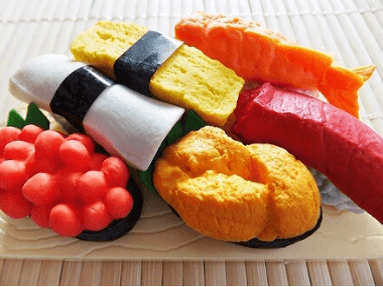-
- USA/Canada 1-800-285-2726
- Australia (02) 8006 4411

Whenever you go to a restaurant, you probably take a look at the menu to make sure you know what you want. Usually, a menu features images of the most popular meals, to give you an idea of what you’re food is like. Japan takes this concept a step further with shokuhin sampuru, realistic life-sized plastic displays of food. While some Japanese restaurants and supermarkets in the United States and other countries also use these plastic food samples, restaurants in Japan often have most, if not all, of their menu on display with shokuhin sampuru plates.

Originating in the late 1920’s during the Showa Period, Japanese artists and candle makers created models of food for restaurants because menus were not common a common thing in Japan at the time. As time went on, different materials were used for durability and detail. Plastic models are mostly handmade and are given a great level of care to ensure a realistic looking dish. While there are stock molds for these models, craftsmen can tailor each to create models identical to an establishment’s most popular dishes.

While plastic food may not sound enticing, these works of art are incredibly detailed, to the point where you could trick someone into trying a bite. During the 1980’s, plastic food models created by the Maizuru Company were on display at the Victoria and Albert Museum in London. There are even competitions held to see which artists can create the most amazing dishes, not unlike a regular cooking competition. Some people may be content with looking at a photo of their meal to help them decide, but having a model of your food to help you decide is pretty great!
See these amazing detailed sample foods by joining any of our Foodie tours.
The Way of Tea
Popular shopping district also known as Osaka's Kitchen
Consists of noodles, soup, toppings, each with a great variety of choices
Known as the Kitchen Town, ideal for restaurants and cooking.